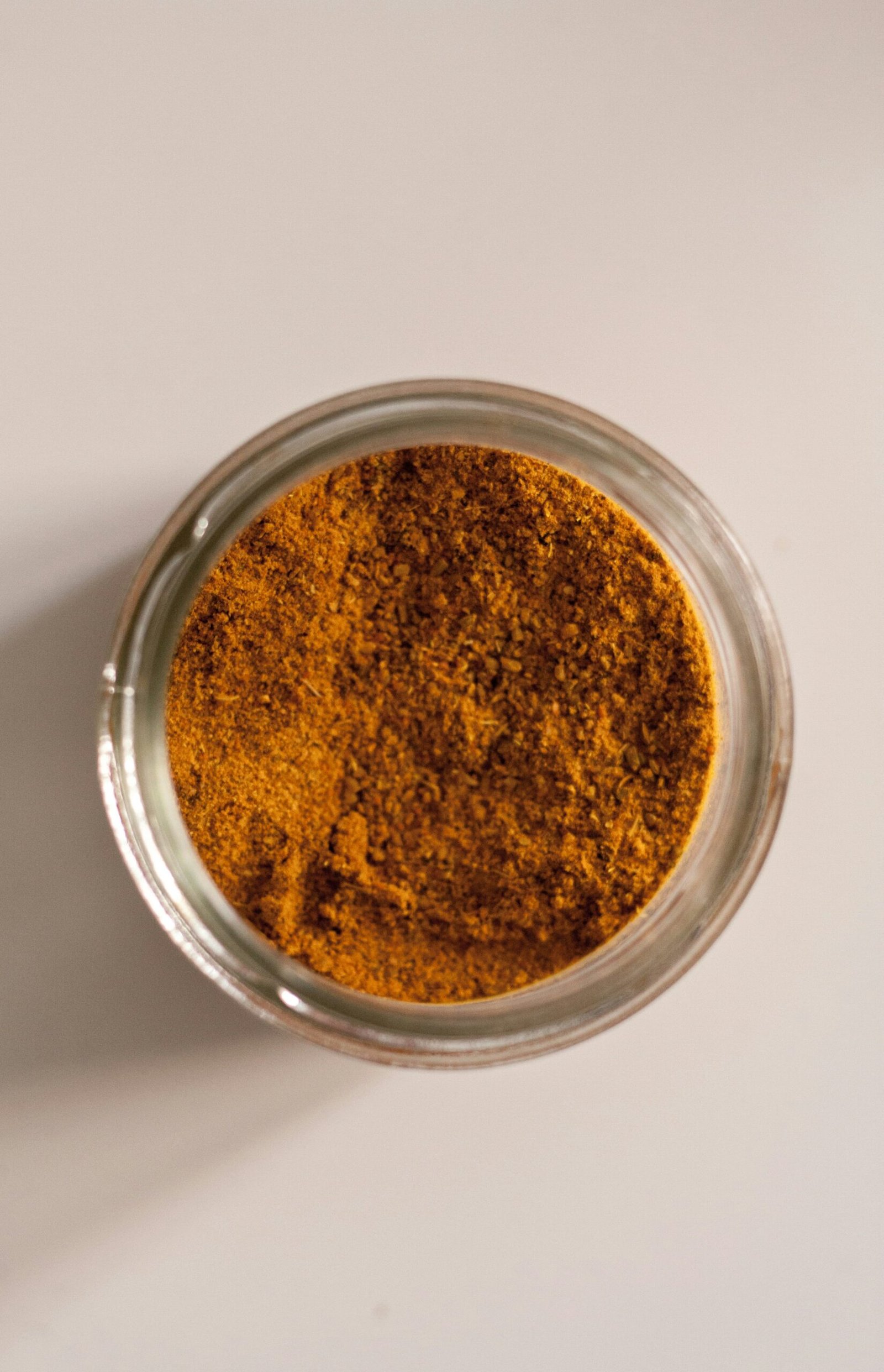Introduction to Organic Spices
Organic spices are derived from plants that are grown without the use of synthetic fertilizers, pesticides, or genetically modified organisms.
This cultivation method is designed to maintain environmental balance while promoting biodiversity and soil health.
Unlike conventional spices, which may be treated with chemicals during growth and processing, organic spices are cultivated in a manner that prioritizes sustainable practices and natural ecosystems.
This distinction not only impacts the way spices are grown but also affects their flavor profile, nutritional value, and overall quality.
The demand for organic products has surged globally, influenced significantly by increasing health awareness among consumers.
As individuals become more conscious of their food choices, many are seeking alternatives that align with a holistic approach to well-being.
Organic spices have emerged as a popular option, with consumers drawn to their perceived health benefits and superior taste.
This trend is particularly significant in developed markets, where health trends and dietary preferences have shifted towards natural and organic foods.
The rise of e-commerce has further facilitated access to organic spices, allowing consumers worldwide to conveniently purchase products directly from suppliers, including those that export from India.
In India, the cultivation of organic spices holds great promise.
The country’s diverse climatic conditions and rich agricultural heritage provide an ideal environment for the production of various organic spices.
As Indian farmers adopt organic farming practices, the nation is poised to become a pivotal player in the global organic spice market.
With export from India gaining momentum, the world is now more aware of the high-quality organic spices that India has to offer, which aligns with the evolving preferences of health-conscious consumers across the globe.
Overview of the Indian Spice Industry
The Indian spice industry boasts a rich and ancient heritage, tracing its roots back several millennia.
Historical texts indicate that India was known as the “Spice Garden of the World,” primarily due to its diverse range of spices such as black pepper, turmeric, and cardamom.
These spices were not only integral to culinary practices but also played a significant role in trade, as they were highly sought after in international markets.
The growth of the spice industry can be attributed to India’s unique climatic conditions and geographical diversity, which allow for the cultivation of a wide array of spices.
In contemporary times, the Indian spice industry holds a prominent position in the global market, contributing significantly to the national economy.
It is one of the largest producers and exporters of spices worldwide. According to reports, India accounts for over 40% of the total global spice production and export from India has been on a consistent rise.
This is largely due to the country’s commitment to maintaining stringent quality standards and certifications that align with international market demands.
Key spices produced in India include black pepper, cardamom, turmeric, cinnamon, and chili.
Each of these spices carries cultural significance and is integral to various regional cuisines across the country, enhancing their market appeal.
Moreover, the robust supply chain networks developed for these spices have played a crucial role in facilitating both domestic sales and export from India.
Investment in technology and training has further ensured improvements in farming practices, quality control, and sustainability, enabling Indian spices to stand out in competitive global markets.
Thus, the resilience of the Indian spice industry and its ability to adapt to changing market dynamics has solidified its standing on the global stage.
With increasing consumer preference for organic and high-quality spices, India is poised to maintain its reputation as a leading supplier in the coming years.
Emergence of Organic Farming in India
The rise of organic farming in India has garnered significant attention in recent years, primarily due to increasing consumer awareness regarding health and environmental sustainability.
Indian farmers are gradually transitioning towards these eco-friendly agricultural practices, recognizing the long-term benefits associated with organic cultivation.
Various methodologies have been employed in this shift, including crop rotation, organic composting, and the use of bio-pesticides.
These practices not only enhance soil quality but also ensure the production of high-quality organic spices which are poised to make a mark in the global market.
Despite the promising advancements, organic farmers in India face a multitude of challenges. One of the primary obstacles is the lack of access to knowledge and resources related to organic farming techniques.
Farmers often find it difficult to transition from conventional methods to organic practices without adequate training and support.
Additionally, the initial investment required for organic farming can be substantial, deterring many rather than encouraging them.
There is also the prevalent issue of market access, as organic products sometimes lack the visibility they need within the traditional supply chain.
Government policies play a pivotal role in promoting organic farming within the spice sector.
Several initiatives have been introduced to incentivize farmers, including financial grants and subsidies for adopting organic practices.
Furthermore, the establishment of certification bodies helps ensure that products meet international organic standards, thereby enhancing consumer trust in Indian organic spices.
It’s notable that the government actively supports research and development in organic agriculture, aiming to equip farmers with innovative solutions to overcome challenges.

As a result, the export from India of organic spices is expected to rise appreciably in the near future, marking a significant step towards positioning India as a global leader in organic spice production.
Consumer Trends and Demand for Organic Spices
In recent years, there has been a notable shift in consumer preferences as individuals increasingly prioritize health and sustainability in their purchasing decisions.
This trend has significantly impacted the demand for organic spices, particularly those exported from India.
According to various market studies, global sales of organic spices have seen a steady increase, with a reported growth rate exceeding 10% annually.
This surge can be attributed to the growing awareness of the health benefits associated with organic farming practices, as well as the rising prevalence of lifestyle-related diseases that prompt consumers to seek healthier alternatives.
One of the primary motivations driving the consumer demand for organic spices is the perception of safety and quality.
Many health-conscious individuals are becoming more discerning about the ingredients they use in their cooking and are opting for organic products to reduce exposure to pesticides and chemical additives.
Additionally, with the rise of social media and accessible information, consumers are more informed about the processes behind the cultivation of spices, fostering a preference for products that are ethically sourced and environmentally sustainable.
Furthermore, the rise of vegetarian and vegan diets has influenced the market for organic spices.
As more individuals adopt these dietary practices, the demand for high-quality, flavorful spices has intensified, particularly those that can enhance the taste of plant-based meals.
Indian spices, known for their rich flavors and diverse uses, have found a prominent place in this trend, with many consumers actively seeking to import organic varieties.
The organic spice exports from India have capitalized on this demand, catering specifically to consumers who value the unique qualities associated with these spices.
As we move deeper into 2024, understanding these consumer trends and the motivations driving demand for organic spices will be essential for suppliers and exporters seeking to enhance their market strategies.
Increasing awareness and commitment to health and sustainable practices suggest that the growth in the organic spice market is likely to continue, solidifying India’s position as a leading player in global spice export.
Export Trends in Indian Organic Spices
The export from India of organic spices has witnessed substantial growth in recent years, particularly in 2024. India, being one of the largest producers of organic spices, has positioned itself favorably in the global market.
The country’s favorable climate, rich soil, and traditional agricultural practices contribute to the high quality of spices, thereby enhancing their appeal internationally.
Major organic spices exported from India include turmeric, black pepper, cumin, and cardamom, each catering to the burgeoning demand across various global markets.
Key markets for Indian organic spices include the United States, European Union, Canada, and Australia.
Among these, the United States remains a significant importer, driven by rising consumer awareness regarding health and wellness.
Many consumers are increasingly opting for organic products due to the perceived benefits over conventionally grown spices.
Data indicates that organic spice exports from India to the U.S. alone increased by approximately 15% compared to the previous year, highlighting the growing acceptance of these products.
Export volumes have also shown a positive trend. In 2024, Indian organic spice exports are projected to exceed 50,000 metric tons, marking an impressive growth rate partly attributable to improved packaging and quality certification processes.
Furthermore, various government initiatives aimed at promoting organic farming have bolstered the entire supply chain, enhancing farmers’ ability to export their produce efficiently.
The competitive edge of Indian organic spices in international markets can be attributed to several factors, including cost-effectiveness, diverse spice varieties, and established organic farming practices.
However, challenges remain, such as adhering to international quality standards and addressing logistics concerns.
Overall, the landscape for export from India in organic spices remains promising, driven by market demands and an increasingly health-conscious consumer base worldwide.
Impact of E-commerce on Organic Spice Sales
The rise of e-commerce has significantly transformed the landscape of organic spice sales, particularly those originating from India.
As global consumers become increasingly health-conscious and seek out organic products, the demand for Indian organic spices has surged.
E-commerce platforms have made these spices more accessible to a wider audience, enabling consumers to purchase them from the convenience of their homes.
Major online marketplaces, such as Amazon and Flipkart, have dedicated sections for organic spices, allowing vendors to reach both domestic and international markets, thereby facilitating a robust export from India.
Moreover, the increasing inclination toward digital purchasing has led to a notable shift in consumer behavior. Research indicates that more consumers are turning to online platforms for their grocery needs, including organic spices.
This trend is characterized by convenience and variety, as consumers can easily compare products, read reviews, and access information on sourcing and sustainability practices. Such accessibility not only boosts sales but also fosters consumer trust in the quality of Indian organic spices.
To capitalize on this trend, businesses are employing advanced digital marketing strategies tailored for e-commerce environments.
This includes leveraging social media platforms for targeted advertising campaigns, engaging content that highlights the health benefits of organic spices, and utilizing search engine optimization techniques to improve online visibility.
As these businesses effectively market their products through e-commerce channels, they strengthen the reputation of Indian organic spices in global markets.
Through a combination of favorable consumer trends and strategic marketing efforts, the future of organic spice sales, particularly those exported from India, appears bright.
E-commerce not only provides a platform for growth but also enhances the ability to meet global demand, thereby enriching the organic spice segment further.
Challenges Faced by Indian Organic Spice Exporters
The journey of Indian organic spice exporters in the global market is laden with a myriad of challenges that can impede their growth and competitiveness.
One of the primary hurdles faced by exporters is ensuring quality assurance throughout the production and supply chain.
The organic spice market is heavily scrutinized, and any inconsistencies in quality can lead to significant reputational damage and loss of clientele.
Exporters must adhere to stringent quality standards to meet the heightened expectations of international buyers.
In addition to quality assurance, certification issues pose another substantial challenge. The certification process for organic produce is often complex and resource-intensive.
Indian exporters must navigate the array of regulations established by different countries, which can vary significantly, leading to potential delays and increased costs.
The lack of a uniform certification process internationally complicates the export from India, making it crucial for exporters to invest time and resources in acquiring the necessary certifications to validate their organic claims.
Moreover, competition from countries like Vietnam, Indonesia, and Sri Lanka further intensifies the struggles faced by Indian exporters.
These nations not only offer comparable quality but often at more competitive prices.
Therefore, Indian exporters need to highlight the unique qualities and superior standards of Indian organic spices to differentiate themselves in a crowded marketplace.
This could involve leveraging India’s rich heritage in spice cultivation and the diverse flavors that result from its unique climatic conditions.
Logistical challenges also present significant obstacles for Indian organic spice export.
From transportation to storage, each step in the logistics chain requires careful management to ensure that the fresh quality of spices is maintained.
Solutions such as investing in better logistics infrastructure, employing advanced technologies for tracking, and optimizing supply chain processes could go a long way in overcoming these challenges.
By addressing these critical issues, Indian organic spice exporters can position themselves more favorably in the ever-evolving global market.
Future Outlook for Indian Organic Spices
The landscape of the organic spice market in India is poised for significant transformation in the coming years.
With an increasing global awareness of health and wellness, the demand for organic products, particularly spices, is predicted to rise substantially.
Industry experts estimate that the export from India of organic spices could experience a compound annual growth rate (CAGR) of approximately 15% by 2024, fueled by both domestic consumption and international demand.
This growth is largely attributed to a shift in consumer preferences towards natural and chemical-free options.
Moreover, the Indian government is proactively supporting the organic farming sector through various initiatives, including subsidies, training programs for farmers, and improved certification processes.
These efforts are expected to enhance the quality of organic spices and facilitate their export from India, thereby increasing the country’s competitiveness in the global market.
The participation of Indian farmers in organic spice cultivation is also anticipated to rise, as more agricultural communities recognize the profitability of organic farming practices over traditional methods.
An essential element influencing the future of the organic spice market is the evolving consumer preferences towards sustainability and ethical sourcing.
As consumers become more conscientious about their purchasing choices, they are likely to favor brands that ensure environmental responsibility and fair trade practices.
This shift will encourage Indian producers to adopt more sustainable practices that not only embrace organic farming but also improve the overall supply chain, further enhancing the export potential of organic spices from India.
Additionally, the emergence of e-commerce platforms provides Indian organic spice producers an unprecedented opportunity to reach a global audience.
Digital marketing strategies and online marketplaces can significantly aid in showcasing unique offerings from India.
In conclusion, the future of Indian organic spices appears promising, with potential for robust growth driven by market demand, support from government policies, and shifting consumer values.
Conclusion
In conclusion, the rising prominence of Indian organic spices in global markets marks a significant evolution in both agricultural practices and consumer preferences.
The transition towards organic farming has enabled farmers to cultivate spices that meet global quality standards, thereby enhancing their marketability.
As consumers become increasingly health-conscious and environmentally aware, they are more inclined to opt for organic products, which are perceived as safer and more nutritious.
This shift is not just a passing trend; it reflects a broader movement towards sustainable living.
The implications of this shift extend beyond individual health benefits. For Indian farmers, the export from India of organic spices provides an invaluable economic opportunity.
It allows them to achieve higher profit margins compared to conventional farming, as organic products typically command a premium price in the international markets.
Furthermore, the promotion of organic spices contributes to the enhancement of farming conditions, fostering biodiversity and reducing reliance on harmful pesticides and fertilizers.
As a result, not only are farmers benefitting economically, but the environment is also receiving much-needed support.
Moreover, the rise of Indian organic spices enhances the overall economy. As demand continues to grow, it creates livelihoods not only for farmers but also for those involved in processing, exporting, and retailing these products.
This chain of economic activity is essential for rural development and economic empowerment, particularly in India, where agriculture remains a cornerstone of livelihood for millions.
As consumers, the choice to import and utilize organic spices from India underscores a commitment not only to personal health but also to ethical and sustainable consumption practices.
Therefore, it is imperative to recognize the significance of Indian organic spices in the global market. By choosing these products, individuals can contribute to a healthier planet and support robust economic growth within India’s agricultural sector.


 By Vijay
By Vijay



No comment yet, add your voice below!